What is water level sensor?
Water level sensor is a device that measures the high or low level of a liquid in a fixed vessel. According to the method of liquid level measurement, there are two types of contact and non-contact. What we call input water level transmitter is a contact measurement, which converts the height of liquid level into electrical signal output. It is a widely used water level transmitter at present.
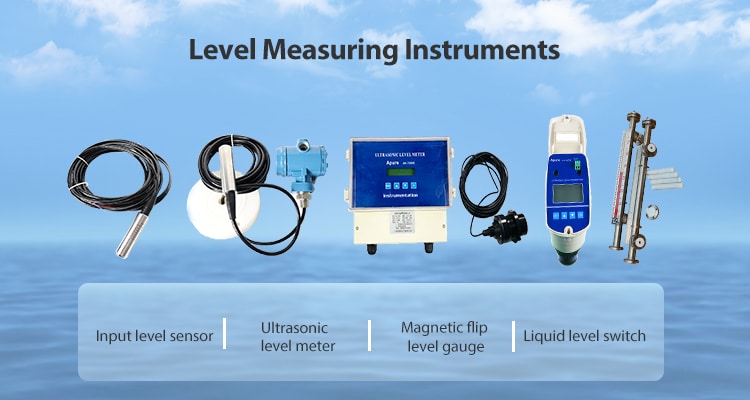
How does the water level sensor work?
The working principle of the water level sensor is that when it is placed into the liquid to be measured at a certain depth, the pressure on the front surface of the sensor is converted into the liquid level height. The calculation formula is Ρ=ρ.g.H+Po, where P is the sensor surface pressure, ρ is the density of the liquid to be measured, g is the local acceleration of gravity, Po is the atmospheric pressure on the surface of the liquid, and H is the depth of the sensor dropped into the liquid.
Where to use water level sensors?
Uses of water level sensors include the following applications.
- Water level measurement in pools and tanks
- Water level measurement in rivers and lakes
- Marine water level measurement
- Level measurement of acid and alkaline liquids
- Oil level measurement of oil trucks and mailboxes
- Swimming pool water level control
- Tsunami warning and sea level monitoring
- Cooling tower water level control
- Sewage pump water level control
- Liquid level remote monitoring
What are the benefits of water level sensors?
- Simple structure: no movable or elastic components, extremely reliable, no regular maintenance during use. Simple and easy to operate.
- Easy installation: When using, first connect one end of the wire correctly, then put the other end of the water level probe into the solution to be measured.
- Range optional: It can measure the water level within the range of 1-200 meters, and other measurement ranges can also be customized.
- Wide range of application: It is suitable for liquid level measurement of high temperature and pressure, strong corrosion, high pollution and other media.
- Wide range of measuring medium: from water, oil to high viscosity paste can be measured with high accuracy, and the temperature compensation range is wide, not affected by the blistering, deposition and electrical characteristics of the measured medium.
- Long service life: general liquid level sensor can be used in a normal environment for 4-5 years, in a harsh environment can also be used for 2-3 years.
- Powerful: can be directly connected to the digital display table real-time display values, can also be connected to a variety of controllers to set the upper and lower limits to control the amount of water in the container.
- Accurate measurement: built-in high-quality sensors, high sensitivity, fast response time, accurately reflect the subtle changes in the flow or static liquid level, high measurement accuracy.
- Various types: The liquid level sensor has various structure designs such as input type, straight rod type, flange type, threaded type, induction type, screw-in type, float type, etc. It can meet the measurement needs of various places.
What are the types of water level sensors?
Here are 9 types of liquid level sensors for your reference.
Magnetic flap level gauge
Magnetic flip level gauge (also known as magnetic float level gauge) based on the buoyancy principle and magnetic coupling developed. When the liquid level in the measured container rises and falls, the magnetic float in the body tube of the level gauge also rises and falls. The permanent magnetic steel in the float is transferred to the magnetic flip column indicator through magnetic coupling, driving the red and white flip column to turn 180°. When the liquid level rises, the flip column changes from white to red, and when the liquid level drops, the flip column changes from red to white. The red and white junction of the indicator is the actual height of the liquid level inside the container, so as to realize a clear indication of the liquid level.
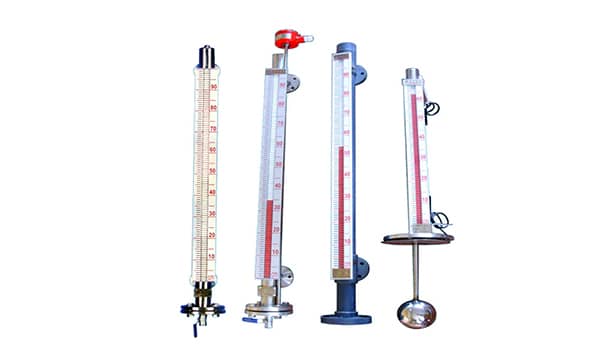
Characteristics:
- Wide range of application, installation of various forms, suitable for any medium level, interface measurement.
- The measured medium is completely isolated from the indicating structure, with good sealing performance, leakproof, and high reliability for liquid level measurement under high pressure, high temperature and corrosion conditions.
- Set field indication, remote transmission, alarm control about one and can be adjusted freely, fully functional dual-color indication with luminous, continuous and intuitive, eye-catching, large measurement range, observation direction can be arbitrarily changed.
- Good vibration resistance, can adapt to the situation of liquid level fluctuation simple structure, convenient installation, low maintenance cost.
- With fine magnetic steel corrector, on-site adjustment of technical parameters.
Optical water level sensor
Optical sensors are solid-state. They use infrared LEDs and phototransistors, which are optically coupled when the sensor is in the air. When the sensing head is immersed in a liquid, the infrared light escapes, causing the output to change. These sensors can detect the presence or absence of almost any liquid. They are insensitive to ambient light, unaffected by bubbles in air, and unaffected by small air bubbles in liquids. This makes them useful in situations where changes in condition must be recorded quickly and reliably, and where they can operate reliably for long periods without maintenance.
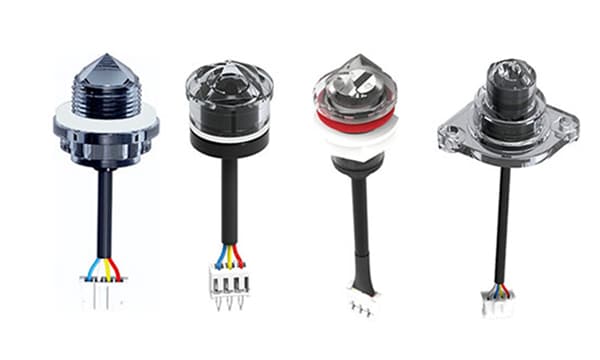
Advantages: non-contact measurement, high accuracy, fast response time.
Disadvantages: Do not use in direct sunlight, water vapor will affect the measurement accuracy.
Capacitance liquid level sensor
Capacitive level switches use 2 conductive electrodes (usually made of metal) in a circuit with a short distance between them. When the electrodes are immersed in the liquid, it completes the circuit.

Advantages: It can be used to determine the rise or fall of liquid in a container. By making the electrodes and the container the same height, the capacitance between the electrodes can be measured. No capacitance means no liquid. A full capacitance represents a full vessel. The “empty” and “full” measurements must be recorded, and the level is then displayed using 0% and 100% calibration meters.
Disadvantage: Corrosion of the electrodes will change the capacitance of the electrodes and require cleaning or recalibration.
Hydrostatic level transmitter
Hydrostatic level meter is based on the principle that the static pressure of the measured liquid is proportional to the height of that liquid, and uses an isolated diffusion silicon sensitive element or ceramic capacitive pressure sensitive sensor with excellent performance to convert the static pressure into an electrical signal, which is then converted into a standard electrical signal (generally 4-20mA/1-5VDC) after temperature compensation and linearity correction.
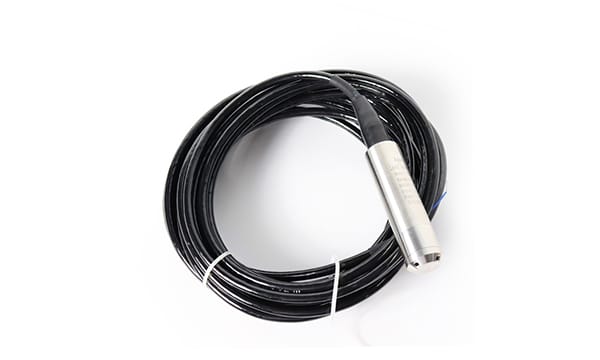
Characteristics
- Good stability, full degree, zero long-term stability up to 0.1%FS/ year. The temperature drift is less than 0.1%FS in the compensation temperature range from 0 ℃ to 70 ℃ and less than 0.3%FS in the whole allowable operating temperature range.
- With reverse protection, current limiting protection circuit, in the installation of positive and negative polarity connection will not damage the transmitter, abnormal transmitter will automatically limit the current within 35MA.
- Solid structure, no moving parts, high reliability, long service life.
- Easy to install, simple structure, economic and durable.
Tuning fork level sensor
The tuning fork level meter is a liquid point level switching tool designed using the tuning fork principle. The working principle of the switch is to cause its vibration by the resonance of a piezoelectric crystal.
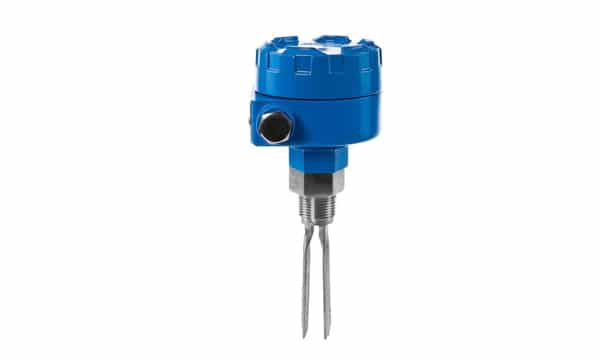
Every object has its resonant frequency. The resonant frequency of an object is related to the size, mass, shape, and force of the object. A typical example of the resonant frequency of an object is: the same glass is continuously filled with water of different heights and tapped to perform instrumental music.
Advantages: can be truly independent of flow, bubbles, type of liquid, etc. No calibration is required.
Disadvantage: cannot be used for viscous media.
Diaphragm liquid level sensor
Diaphragm or pneumatic level switches rely on air pressure to push the diaphragm, which engages a microswitch inside the body of the device. As the level increases, the pressure in the detection tube increases until the microswitch is activated. As the level drops, the air pressure also drops and the switch opens.
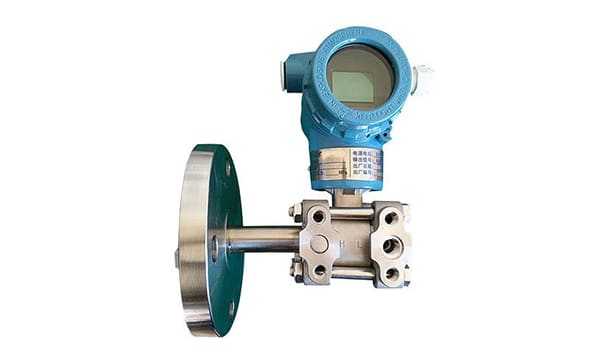
Advantages: The tank does not require electricity, can be used with a variety of liquids, and the switch does not come into contact with the liquid.
Disadvantages: maintenance is required over time because it is a mechanical device.
Float water level sensor
Float level switches are the original level sensors. They are mechanical devices. A hollow float is attached to the arm. As the float rises and falls in the liquid, the arm will be pushed up and down. The arm can be connected to a magnetic or mechanical switch to determine on/off, or to a level gauge that will go from full to empty as the level drops.
Float switches for water pumps are a cost effective way to measure water levels in basement pumping pits.
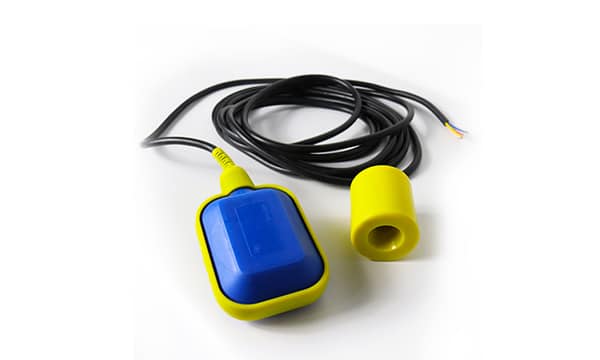
Advantages: Float switches can measure any type of liquid and can be designed to operate without any power source.
Disadvantages: They are larger than other types of switches, and because they are mechanical, they must be used more frequently than other level switches.
Ultrasonic liquid level sensor
The ultrasonic level meter is a digital level meter controlled by a microprocessor. In the measurement, ultrasonic pulses are emitted by a transducer (transducer). The sound waves are reflected by the liquid level and received by the same transducer. It is converted into an electrical signal by a piezoelectric crystal. The time between the emission and reception of the acoustic wave is used to calculate a measure of the distance to the liquid surface.

Ultrasonic water level sensor works on the principle that the ultrasonic transducer (probe) emits high-frequency pulse sound waves when it encounters the measured level (object) surface, is reflected, and the reflected echo is received by the sensor. Transducer and converted into an electrical signal. The propagation time of the sound wave. It is proportional to the distance of the sound wave to the surface of the object. Sound wave propagation distance S with the speed of sound C and sound propagation time T can be expressed in the formula: S = C × T / 2.
Advantages: non-contact measurement, the measured medium is almost unlimited, and can be widely used to measure the height of various liquids and solid materials.
Disadvantages: the measurement accuracy is affected by the current ambient temperature and dust.
Radar level gauge
Radar level gauge is a level measurement instrument based on the time travel principle. The radar wave travels at the speed of light and the travel time can be converted into a level signal by electronic components. The probe emits high frequency pulses traveling at the speed of light in space. When the pulses encounter the surface of the material, they are reflected and received by the receiver inside the instrument, converting the distance signal into a level signal.
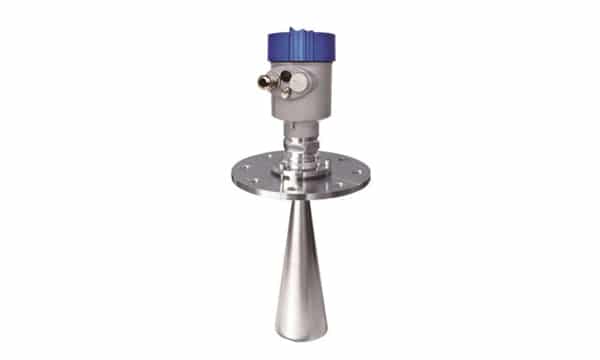
Advantages: wide range of application, unaffected by temperature, dust, steam, etc.
Disadvantages: easy to generate interference echoes, affecting the measurement accuracy.
Conclusion
In many industrial applications, one of the important elements of process control is knowing how much gas or liquid is present in a given vessel. There is a need to ensure that the fill level of a given substance does not overflow. Therefore, level measurement transmitters play an important role in monitoring the liquid level of a vessel, container or tank. For further questions or requirements please contact our professional engineers.
